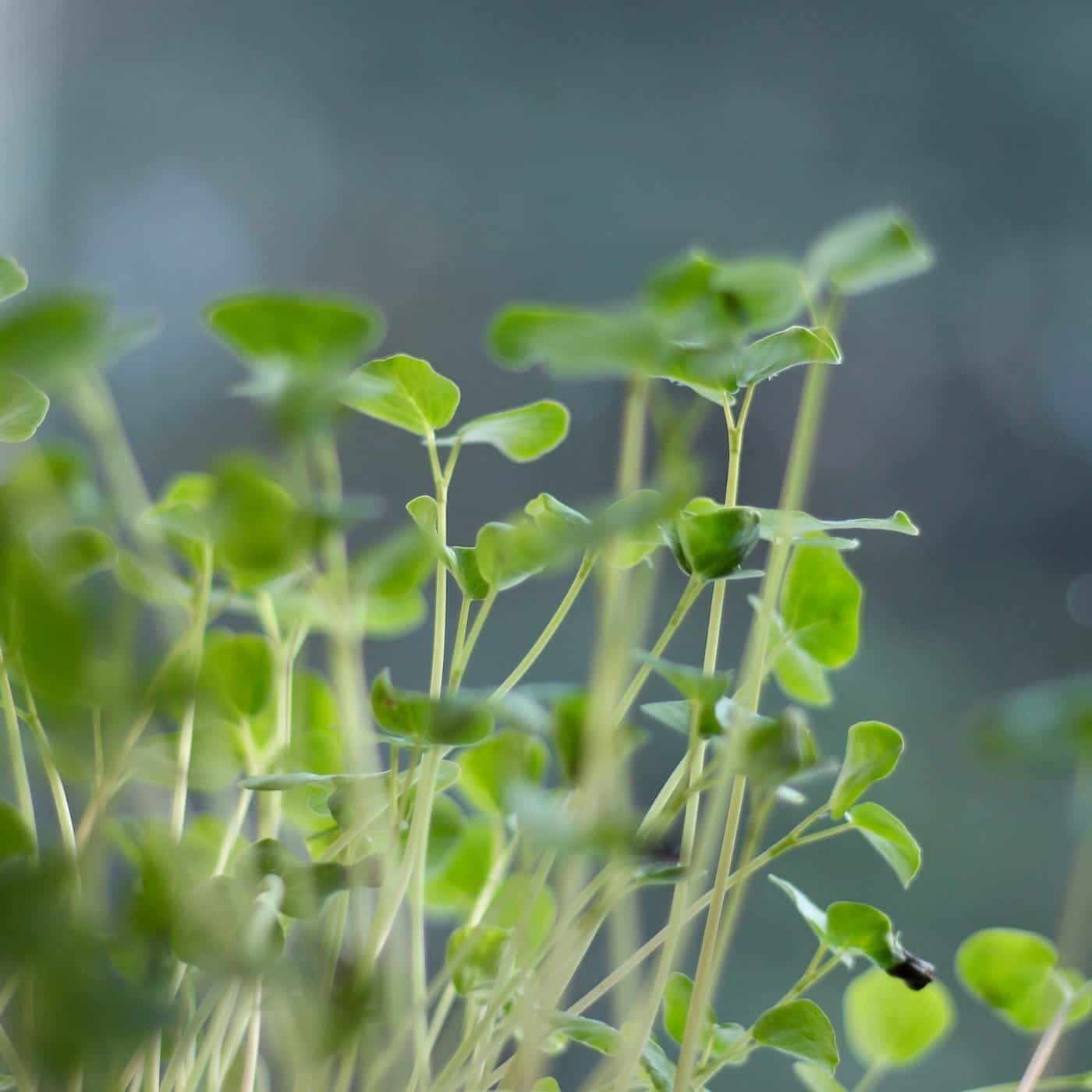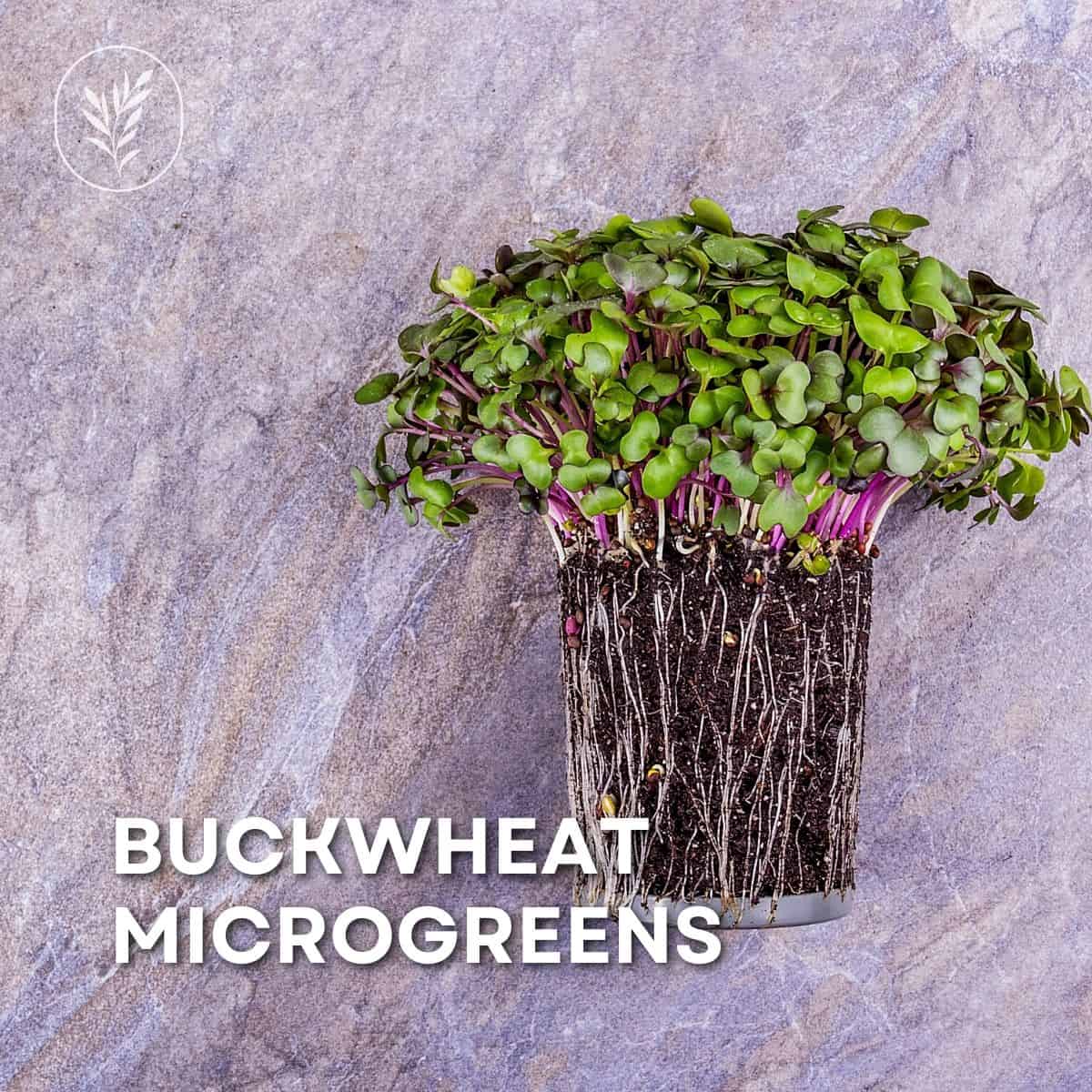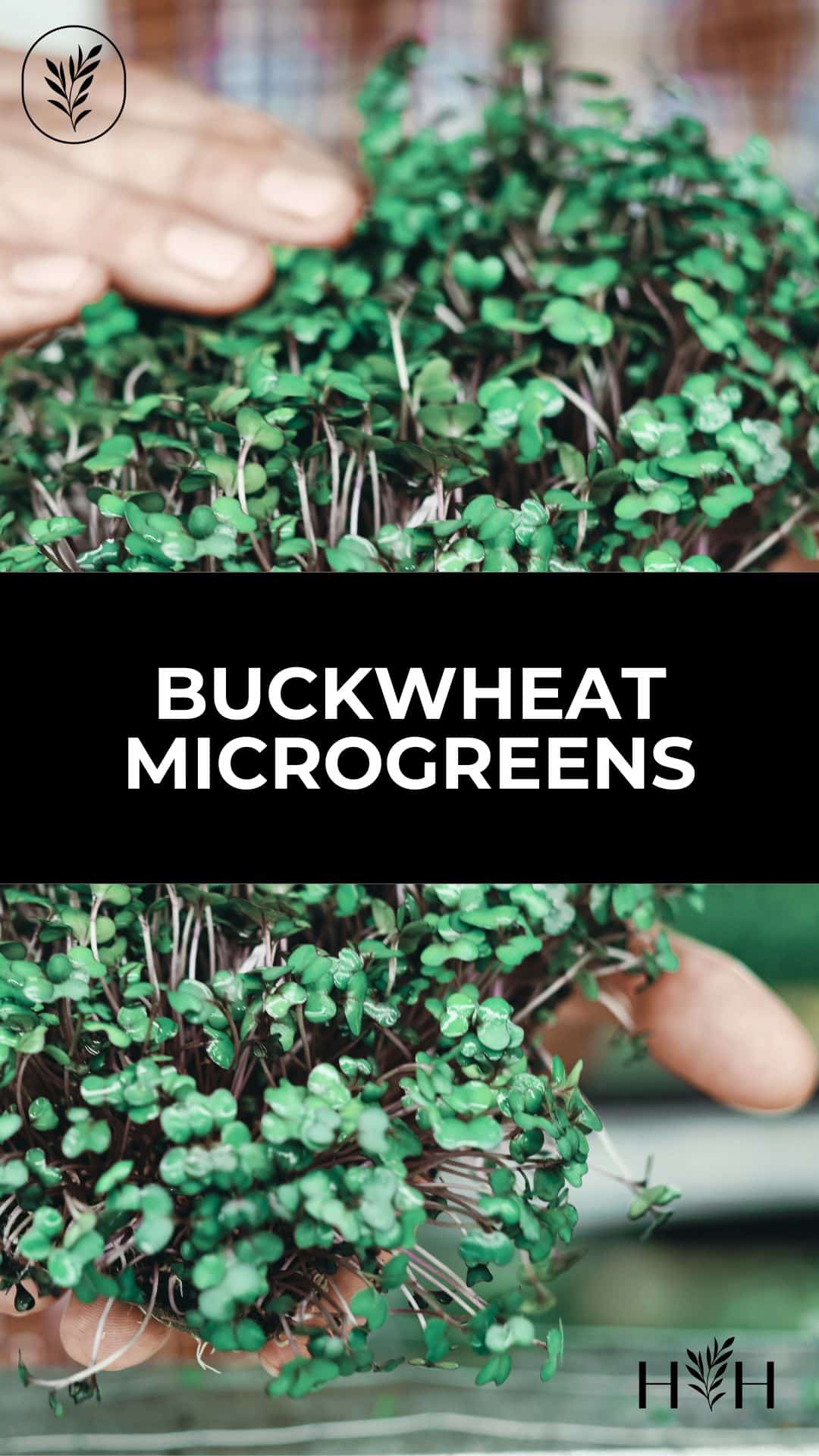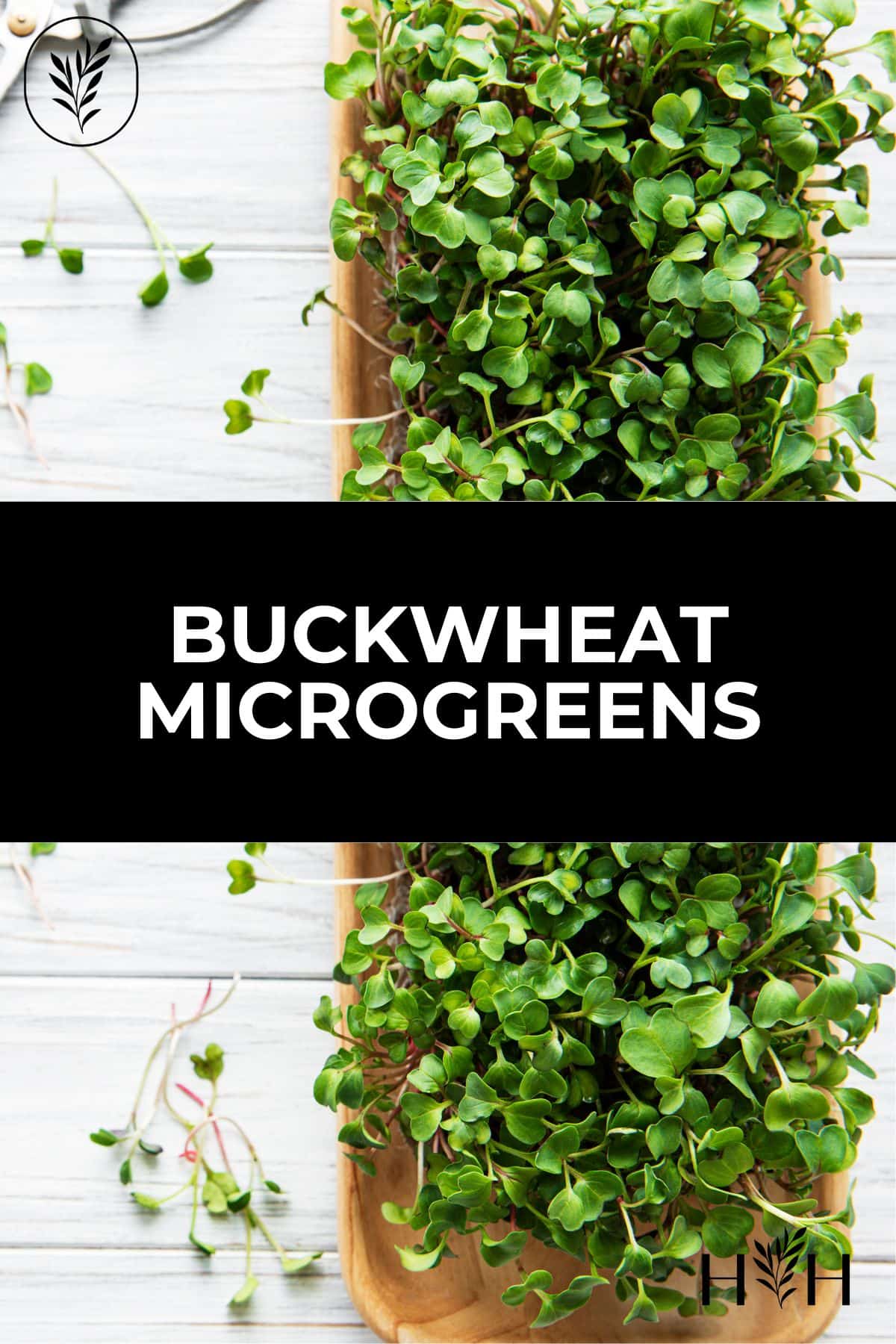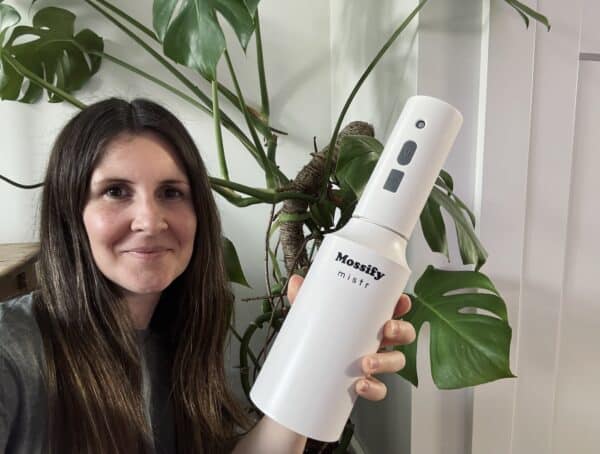Buckwheat microgreens are sturdy, fresh, and lovely to use in cooking. They’re perfect in salads, on a sandwich, or on top of a meal. Here’s how to grow buckwheat as a microgreen for the first time!
Growing these microgreens is an easy and satisfying project, perfect for beginner gardeners! With the right supplies, you’ll be able to grow your own microgreens from start to finish.
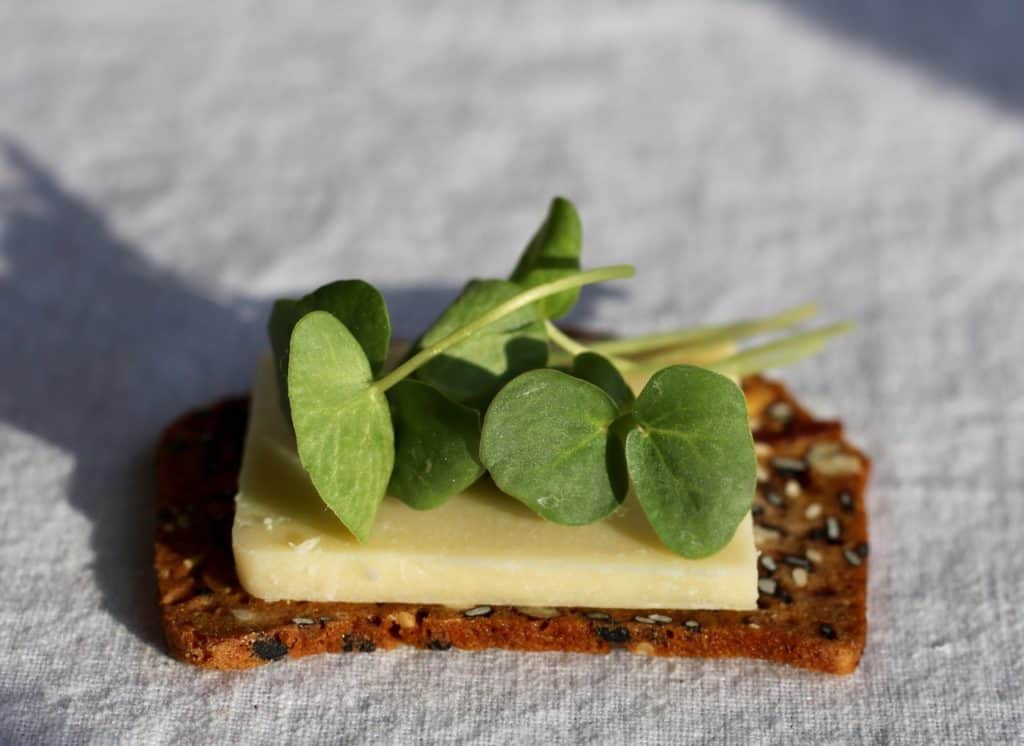
How to grow buckwheat microgreens
Here are the steps for growing Buckwheat Microgreens:
- First Thing – Soak buckwheat seeds in filtered water for 8-12 hours (I do mine overnight in a mason jar).
- Drain the water from the seeds into the sink.
- Rinse and drain the seeds.
- Continue rinsing and draining the seeds with filtered water two or three times a day. When roots start to show, it’s on to the next step.
- Place the seeds on a moist potting soil mix.
- Cover the tray of seeds and potting mix lightly.
- Keep the seeds moist by misting the buckwheat seeds as required. Twice a day is generally enough.
- When leaves appear on the shoots, place the tray of microgreens in the sunlight or under a plant light.
- Harvest with a sharp knife or scissors when the greens are a few inches tall and have nice healthy green leaves.
- Yum!



